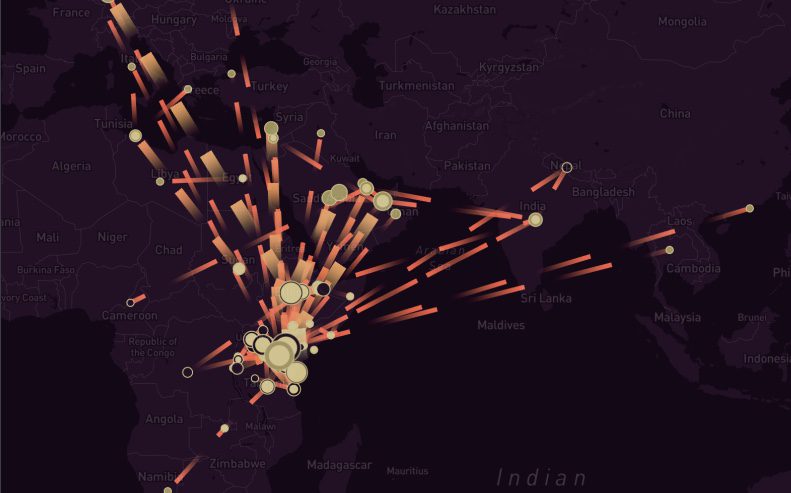
Kenya’s human trafficking routes: new data insights into high activity locations and regional risk
During the third quarter of 2019, the Civil Society Organisation (CSO) contribution to the Universal Periodic Review (UPR) – the peer review of the human rights records of all 193 UN member states – cited the lack of comprehensive, consolidated and credible data and information on trafficking in Kenya as one of the main challenges in current antitrafficking work. The gaps identified in legal and policy frameworks are exacerbated by the lack of a unified system to collect, document, analyze, and share data.
In August 2019, Stop the Traffik Kenya (STTK) and Freedom Collaborative (FC), a project operated by Liberty Shared, had conducted a data collection exercise with CSOs in Kenya, to report on known human trafficking and high-risk migration routes based on their work with survivors and at-risk populations. The data that was gathered contributed to the strategic planning of more targeted interventions by several CSOs. After this initial exercise was conducted, various organizations approached STTK with requests to be included in any follow-up activity and it was agreed that an upscaling of the previous study would be implemented in 2020.
This new effort has been conducted with the aim of contributing to national human-trafficking data collection efforts, as well as supporting STTK in establishing a formal mechanism in which its antitrafficking network can support the government in collecting and sharing data in order to provide an accurate picture of the scale of human trafficking in the country.
The following data expands on the information previously collected and builds on the lessons learned from this initial process and data analysis. The data was gathered using Freedom Collaborative’s Victim Journey Tracker tool, which has been adapted to collect additional data on the modes of transportation and recruitment methods used for each route.
This report provides an analysis of the data collected, maps specific migration corridors in which organisations have encountered a high number of cases of exploitation, and analyses ways in which the data can be used to build influence and cooperation in collaboration with relevant stakeholders and government agencies. For the purposes of clarity, the report is divided into individual sections that summarize the data findings along regional lines, and also includes chapters focused on identified transportation and airlines used, as well as methods of recruitment and coercion.
Even as the report is divided into these chapters, it is crucial to understand the complex nature of migration to and from Kenya. Capturing all the nuances and changing characteristics of the movement of migrants is beyond the scope of any agency or organization. It is, therefore, our endeavor to bring together the information and insights that are available in an attempt to map and document trends. The data contributed, unlike the previous data set, provides details on specific cities and counties that Kenyans migrate from – a gap identified in the previous report. 7METHODOLOGY
However, the most important achievement that we want to highlight is the collaboration of CSOs on this initiative. It is important to recognize that there is no centralized system for collecting data and sharing information widely for CSOs or government in Kenya. This means there is very little access to evidence-based data on human trafficking in the region that can support strategic decision-making. Data collections are believed to be costly and human resource-intensive, preventing CSOs from initiating and working together on such efforts.
We are very pleased that this project provides a positive example of how national networks are able to facilitate collaborative action and cooperation to build an improved evidence base and guide data applications, which in turn will strengthen the antitrafficking response of their network members and relevant stakeholders.
